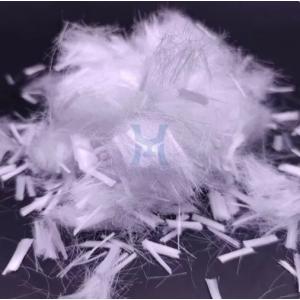Contact person: Mr. Abera
Position:
Address: No. 215, Jianhua South Street, Yuhua District
Country: China
Phone: - Mobi: 13081013406
Polypropylene fibers(PP Fiber)
Price:
Polypropylene fibers(PP Fiber)
Polypropylene fibers are synthetic fibers made from polypropylene polymers that are lightweight, abrasion resistant, resistant to cracking, moisture and heat. This fiber can be made into different forms of textiles, such as fabrics, bags, cords and threads. Polypropylene fibers are widely used in home textiles, automotive interiors and carpets due to their low material cost and ease of production and dyeing. In addition, and more importantly, polypropylene fiber is an environmentally friendly material that is easy to recycle and dispose of in the waste stream.
The Incredible Properties of PP Fiber: Revolutionizing the Construction Industry
Introduction: Unleashing the Power of PP Fiber
Welcome to a comprehensive exploration of the fascinating world of PP fiber. In this article, we will delve into the extraordinary properties and applications of PP fiber that have revolutionized the construction industry. From its inception to its widespread use today, PP fiber has proven to be an invaluable addition to concrete, offering enhanced strength, durability, and crack resistance.
Are you curious to discover how PP fiber has become a game-changer in construction? Let's embark on this journey together and unravel the wonders of PP fiber!
PP Fiber: A Marvel of Modern Construction
PP fiber, short for polypropylene fiber, is a synthetic material made from polypropylene resin. This versatile fiber is widely used in the construction industry to improve the quality and performance of concrete. With its unique set of properties, PP fiber acts as a reinforcement agent, enhancing the structural integrity and durability of concrete structures.
You can find more information on our web, so please take a look.
Polypropylene fibers are synthetic fibers made from polypropylene polymers that are lightweight, abrasion resistant, resistant to cracking, moisture and heat. This fiber can be made into different forms of textiles, such as fabrics, bags, cords and threads. Polypropylene fibers are widely used in home textiles, automotive interiors and carpets due to their low material cost and ease of production and dyeing. In addition, and more importantly, polypropylene fiber is an environmentally friendly material that is easy to recycle and dispose of in the waste stream.
Parameters | Value |
Basic Name | Polypropylene fiber |
Chemical formula | (C3H6)n |
Relative molecular mass | About 40-1000 |
Density | 0.91g/cm³ |
Melting point | 130°C |
Melt Index (MI) | 1.0 ~ 30.0 g/10min (typical) |
Tensile strength | 20 ~ 40 MPa (typical) |
Modulus (E) | 1400 ~ 2400 MPa (typical) |
Shape | Filament, mesh, sheet, etc. |
Color | Generally white |
Moisture absorption | More hydrophilic, easy to absorb moisture |
Common Uses | Textiles, carpets, industrial filtration materials, gloves, static elimination, etc. |
Advantages | Low price, high strength, stable chemical properties, easy to dye, high surface gloss |
Disadvantages | Poor UV resistance, easy to age, easy to deform, easy to burn, heat resistance in general |
Processing method | Melt spinning, dry spinning, wet spinning, injection molding, etc. |
Washing, maintenance and storage | Avoid using high temperature water and strong acid and alkali solutions when washing, and keep dry when storing |
Applicable temperature range | -10°C to 100°C (pure polypropylene fibers), but heat resistance can be improved by additives |
Applications | Widely used in textiles, automobiles, construction materials, packaging, medical and other fields |
The Incredible Properties of PP Fiber: Revolutionizing the Construction Industry
Introduction: Unleashing the Power of PP Fiber
Welcome to a comprehensive exploration of the fascinating world of PP fiber. In this article, we will delve into the extraordinary properties and applications of PP fiber that have revolutionized the construction industry. From its inception to its widespread use today, PP fiber has proven to be an invaluable addition to concrete, offering enhanced strength, durability, and crack resistance.
Are you curious to discover how PP fiber has become a game-changer in construction? Let's embark on this journey together and unravel the wonders of PP fiber!
PP Fiber: A Marvel of Modern Construction
PP fiber, short for polypropylene fiber, is a synthetic material made from polypropylene resin. This versatile fiber is widely used in the construction industry to improve the quality and performance of concrete. With its unique set of properties, PP fiber acts as a reinforcement agent, enhancing the structural integrity and durability of concrete structures.
You can find more information on our web, so please take a look.
SEND INQUIRY
Please fill in fully your information to send email
CATEGORY














 Agriculture
Agriculture